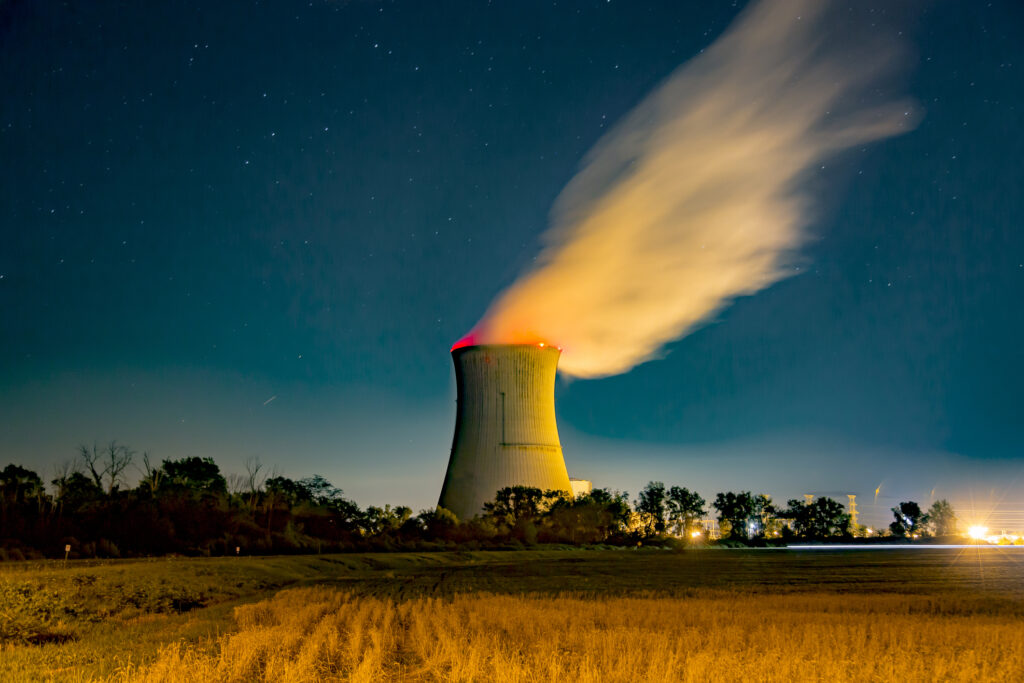Even before the ink was dry on former President Barack Obama’s signature on his Environmental Protection Agency’s (EPA) Clean Power Plan (CPP), states and industry were rushing up the courthouse steps to challenge the plan and block its implementation.
CPP required states to reduce carbon dioxide emissions from their electric power sector by 32 percent below 2005 levels on average nationwide by 2030, in Obama’s vain effort to fight climate change. The emission reductions were set on a state-by-state basis with some states – those that generated a large portion of their electricity from coal-fired power plants, primarily red states – having to reduce emissions by 40 to 60 percent or more. By contrast, states with little power generated by coal, typically blue states with comparatively high electric prices, had much lower emission reduction targets. Some were not required to reduce emissions at all.
A variety of industries joined attorneys general from 27 states to challenge CPP’s legality. Among other things, they argued EPA exceeded its power under the 1970 Clean Air Act, violating powers historically reserved to the states to designate the appropriate sources of electric power within their borders. Other CPP opponents, including Laurence Tribe, a well-known professor of constitutional law at Harvard Law School, went further, arguing CPP was not just illegal but unconstitutional.
Perhaps indicating it suspected EPA’s action went beyond what the law or Constitution allows, on February 9, 2016 the United States Supreme Court, in an unprecedented decision, placed a preemptive nationwide stay on CPP until all court actions in the cases were final.
Everything changed when Donald Trump became president. Trump, who argued climate regulations were unnecessarily hampering domestic energy development and economic growth, directed EPA on March 28, 2017 to review CPP to determine whether it was justified. Following Trump’s directive, EPA published on October 16, 2017 an Advanced Notice of Proposed Rulemaking proposing repeal of the Clean Power Plan.
All of this history and more is detailed in comments submitted in response to EPA’s proposed repeal of CPP by colleagues of mine at The Heartland Institute: Peter Ferrara, a senior fellow for entitlement and budget policy, and Isaac Orr, a research fellow for energy and environment policy.
While Ferrara and Orr discuss CPP’s illegality, the meat of their comments addresses the economic harm CPP would do if it came into force, the virtues of fossil fuels, and the fact CPP would have no effect on climate change.
Although CPP was never implemented, Ferrara and Orr note it has already caused significant damage to the energy sector. Because utilities must plan decades ahead they prematurely shuttered, or scheduled for closure, some coal-fired power plants in anticipation of CPP eventually coming into effect. This put people out of work and has contributed to higher electric power prices.
Looking at the overall economic costs of the plan, Ferrara and Orr write:
EPA estimated the annual cost of complying with the rules would range between $5.1 billion and $8.4 billion. NERA Economic Consulting estimated the rules could cost dramatically more, between $29 billion and $39 billion per year, more than a quarter-trillion dollars over a standard 10-year federal budget planning cycle. … NERA also estimated CPP regulations would have caused electricity bills to increase between 11 percent and 14 percent per year. At that rate of growth, electricity costs would have multiplied to eight times as great after 15 to 21 years.
A common principle in moral philosophy is “ought implies can,” meaning people (and I would argue institutions) cannot be required to undertake actions that are logically or physically impossible for them to do. A corollary of that principle is government should not impose laws on people or institutions in an effort to reach impossible goals. CPP violates that principle. People should be required to prevent climate change only if it is possible for humans to control the climate – which it isn’t.
Ferrara and Orr make clear CPP violates this fundamental moral principle:
Despite the high price tag associated with CPP, it would have delivered no measurable environmental benefits. According to the Obama-era EPA-sponsored Model for the Assessment of Greenhouse Gas Induced Climate Change …, the CPP regulations, if implemented, would have averted only .019 degrees C of potential future warming by 2100. This amount is too low to be accurately measured with even the most sophisticated scientific equipment. Given that most climate models have predicted too much warming, the reductions in future “global temperatures” resulting from CPP would likely have been even lower. In other words, by EPA’s own estimates, the CPP was all pain and no gain.
In addition, developing countries have indicated they have no intention of cutting their own fossil fuel use because they need coal, natural gas, and oil to help raise vast segments of their populations out of the grinding poverty they still find themselves in in the twenty-first century. For example, on July 18, 2017 President Rodrigo Duterte of the Philippines said about the Paris climate agreement, “You are trying to stymie [our growth] with an agreement. … That’s stupid. I will not honor that.”
Ferrara’s and Orr’s testimony also details the tremendous amount of resources governments around the world have wasted promoting wind and solar energy as alternatives to fossil fuels to fight climate change. For instance, did you know, in 2013 wind received $35.33 per MWh (per unit of energy produced) in subsidies, while and solar power received $231.21/MWh in subsidies. By contrast, coal got only $0.57/MWh, and natural gas and petroleum combined received just $0.67/MWh in subsidies. You read right, wind and solar received 52 times and 345 times more in subsidies than coal, respectively. Largely due to its green energy subsidies and mandates, “businesses and households in Germany paid an extra 125 billion euros in increased electricity bills from 2000 to 2015 to subsidize wind and solar power.” As a result Germans pay 300 percent more for electricity than Americans.
Quoting extensively from the recent book, Fueling Freedom: Exposing the Mad War on Energy, Ferrara and Orr point out the industrial revolution was powered by fossil fuels. Indeed, the discovery of, and the development of technologies to exploit, fossil fuels are responsible for the stark, rapid, and blessedly higher growth in GDP, incomes, wages, health, life expectancy, population, and reduced poverty that have occurred in the past two-and-a-half centuries.
And the growth in carbon dioxide emissions resulting from the burning of coal, natural gas, and oil for energy has contributed to a general greening of the Earth, including a welcome, massive growth in agricultural abundance. Due in part to carbon dioxide fertilization, staple crop and cereal grain records have been set and reset, year after year, repeatedly, over the past half-century – all during a period of relatively moderate warming. As a result hunger, malnutrition, and starvation have fallen dramatically globally.
Ferrara’s and Orr’s comments are comprehensive and I believe dispositive, clearly establishing the rightness of EPA’s proposal to repeal CPP. If you can read only one document describing the flawed logic behind CPP and why it must be repealed, this is the one to read.
— H. Sterling Burnett
SOURCES: The Heartland Institute and Harvard
IN THIS ISSUE …
Humans causing central United States cooling … Cold periods, not warm periods, host weather extremes … Wildfire size, numbers historically low
HUMANS CAUSING CENTRAL UNITED STATES COOLING
Whatever effect human activities are having on average global temperatures, intensive farming in the central United States has resulted in more rainfall, increased yields, and a region-wide cooling, according to a recent paper in Geophysical Research Letters.
Data show “rainfall increased, surface air temperature decreased, and surface humidity increased during the summer over the course of the 20th century” in the central United States. The cooling, especially evident during the summer months, amounted to -0.35 degrees Celsius between the 1940s and 2009. According to the U.S. National Agricultural Statistics Service, “from 1950 to 2010, the amount of corn harvested annually in the Corn Belt increased by 400 percent,” coinciding with the period of lower temperatures and increased rainfall. Regional climate model simulations and observational data indicate the region-wide climate changes are due “to agricultural intensification in the central United States, with natural variability and [greenhouse gas] emissions playing secondary roles.”
SOURCES: Geophysical Research Letters (behind paywall) and No Tricks Zone
COLD PERIODS, NOT WARM PERIODS, HOST WEATHER EXTREMES
The No Tricks Zone has summarized several recent scientific reports examining extreme weather in different regions around the world. All have come to essentially the same conclusion: Current weather conditions are not extreme when compared to the past, and weather is more extreme during colder than warmer periods of time.
In a study in PLOS One, researchers examining tree ring data for the Southwestern United States found weather was much more extreme and exhibited wider swings in variability during the Little Ice Age than during the previous Medieval Warm Period. The authors conclude current climate conditions should result in less variable, extreme weather more similar to the Medieval Warm Period than the types of extreme weather anomalies predicted by climate models.
In a study in the journal Science Advances, the researchers used ice cores to reconstruct past climate conditions, determining periods with decreased carbon dioxide conditions, associated with cooler temperatures, exhibited the greatest weather instability, with extreme weather events being more prevalent and severe.
Two recent studies examined hurricanes and cyclones. One study examined cyclone activity in East Asia from 1979 through 2013, finding cyclone activity has been declining during the recent period of relative warming. The researchers determined warming to the west of Mongolia has suppressed tropical atmospheric circulation patterns weakening cyclone activity in East Asia.
A study examining the long-term hurricane history of Jamaica and the West Indies over the past 1,500 years confirms earlier research that found “hurricane activity was subdued during the [warm] Medieval Climate Anomaly (from 900 to 1350 CE) and became more pronounced during the [cold] Little Ice Age (from 1450 to 1850 CE), followed by a period of variability occurred between 1850 and 1900 before entering another subdued state during the industrial period (from 1950 through 2000 CE).” The study also found Jamaica suffered more frequent and severe periods of drought during the Little Ice Age than it experienced during the Medieval Warm Period or during the past century.
SOURCES: No Tricks Zone; Scientific Reports; PLOS One; Science Advances; Queens University; and The American Meteorological Society
WILDFIRE SIZE, NUMBERS HISTORICALLY LOW
A new study in Nature Geoscience finds the recent large wildfires are neither especially large nor unique historically; in fact, biomass losses to fire are declining. Examining pockets of ancient charcoal stored in the soil on six continents the researchers discovered “global biomass burning declined from AD 1 to ∼1750, before rising sharply between 1750 and 1870. Global burning then declined abruptly after 1870.” The researchers argue the rise in biomass burning from 1750 to 1870 was due to human population growth and land-use changes.
The recent decline in large fires, occurring despite a continuing rise in population and generally rising air temperatures, is due to increasingly intensive agricultural practices – producing more food with less land and using modern chemicals rather than slash-and-burn agriculture – combined with modern, intensive fire management.
SOURCE: Nature Geoscience (behind paywall)





